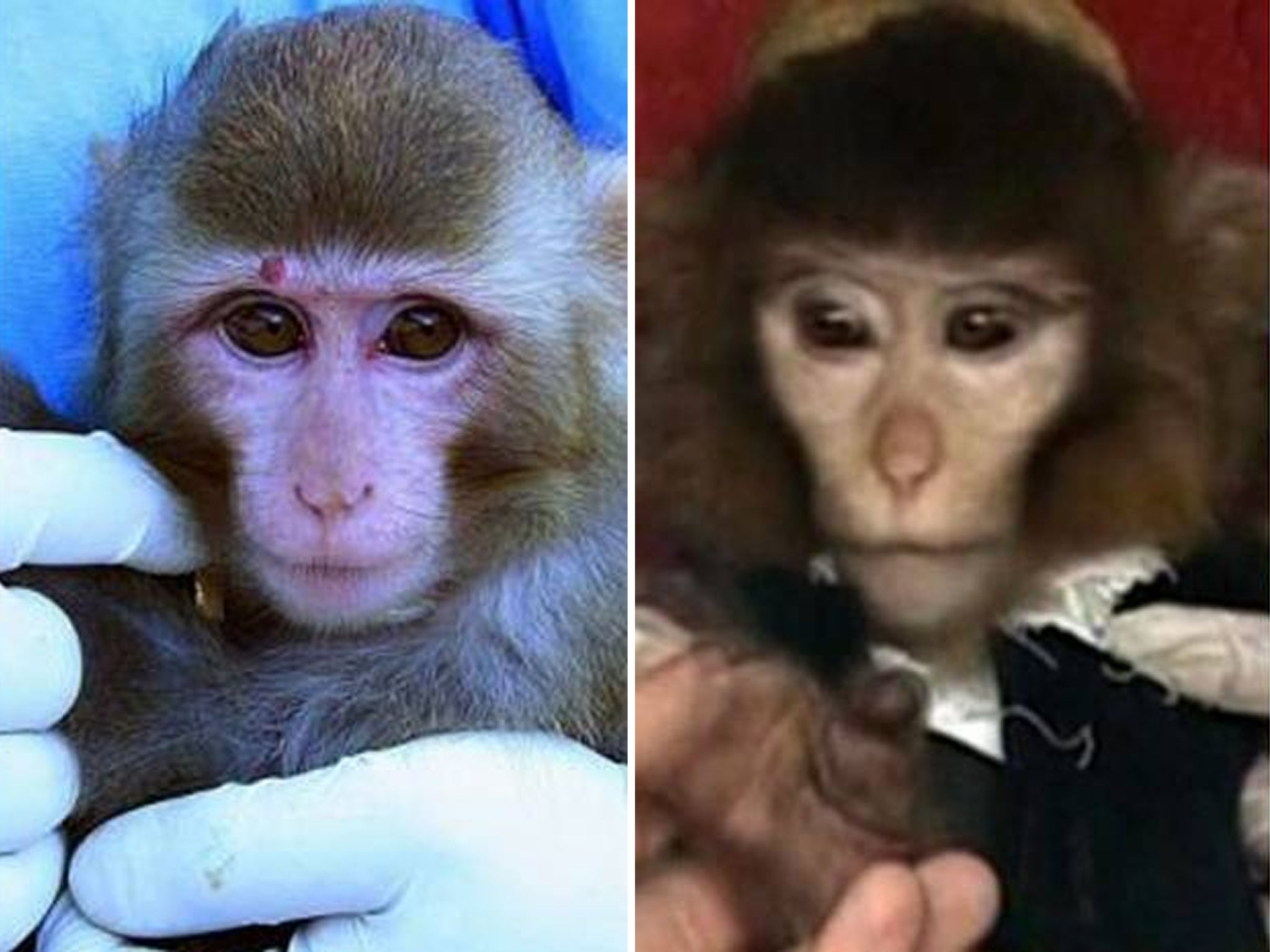The mystery of the Iran space monkey is solved - the pictures showed the wrong animal, say Iranian officials

Your support helps us to tell the story
From reproductive rights to climate change to Big Tech, The Independent is on the ground when the story is developing. Whether it's investigating the financials of Elon Musk's pro-Trump PAC or producing our latest documentary, 'The A Word', which shines a light on the American women fighting for reproductive rights, we know how important it is to parse out the facts from the messaging.
At such a critical moment in US history, we need reporters on the ground. Your donation allows us to keep sending journalists to speak to both sides of the story.
The Independent is trusted by Americans across the entire political spectrum. And unlike many other quality news outlets, we choose not to lock Americans out of our reporting and analysis with paywalls. We believe quality journalism should be available to everyone, paid for by those who can afford it.
Your support makes all the difference.Iran has insisted that it did send a monkey into space amid conjecture that the launch was faked.
Questions were raised over the launch after before and after images released after the animal had reportedly returned to earth appeared to show clearly different animals.
The two different monkeys shown in the photos released by Iran's state media caused some international observers to wonder whether the monkey had died in space or that the launch didn't go well.
One set of pictures showed a relatively dark-haired monkey. Another showed a different monkey — strapped in a pod — that had light gray hair and a distinctive red mole over its right eye.
Analysts also pointed out that there appeared to be no documentary evidence of the animal returning to earth, although images of the rocket taking off were widely publicised.
Over the weekend Iranian officials, seeking to put to rest the idea that monkey business was involved, explained that one of the two official packages of photos of Iran's famed simian space traveler depicted the wrong monkey.
Mohammad Ebrahimi told The Associated Press that the monkey who traveled in space was named "Pishgam," the Farsi word for pioneer. Initially, the Iranian media said "Pishgam" was the rocket that took him on a 20-minute journey into space on Monday.
Ebrahimi said one set of pictures showed an archive photo of one of the alternate monkeys.
He said three to five monkeys are simultaneously tested for such a flight and two or three are chosen for the launch. Finally, the one that is best suited for the mission and isn't stressed is chosen for the voyage.
State TV pictures seen by AP show the dark-haired monkey before and after the space flight, but a package of still pictures released by authorities showed the other monkey with the mole.
"I say this with certainty that the monkey is in good health and the space flight didn't have any physical effect on Pishgam," Ebrahimi said. "Some of the photos released by one of news agencies were not related to the time of flight. They were archive photos of the monkeys being prepared for the launch."
Jonathan McDowell, a Harvard astronomer who tracks rocket launchings and space activity, also said this week's monkey space flight was real, but he had a slightly different explanation for the photo mix-up. He claimed the light gray monkey with the mole died during a failed space mission in 2011.
"The monkey with the mole was the one launched in 2011 that died. The rocket failed. It did not get into space," McDowell said. "They just mixed that footage with the footage of the 2013 successful launch."
Iran has never confirmed that a monkey died in 2011, or that there was a failed mission that year.
Hamid Fazeli, director of Iran's space agency, said this week that Iran will launch a bigger rocket carrying a larger animal to obtain greater safety assurances before sending a man into space.
Iran says it wants to put its own satellites into orbit to monitor natural disasters in the earthquake-prone nation, improve telecommunications and expand military surveillance in the region.
Join our commenting forum
Join thought-provoking conversations, follow other Independent readers and see their replies
Comments